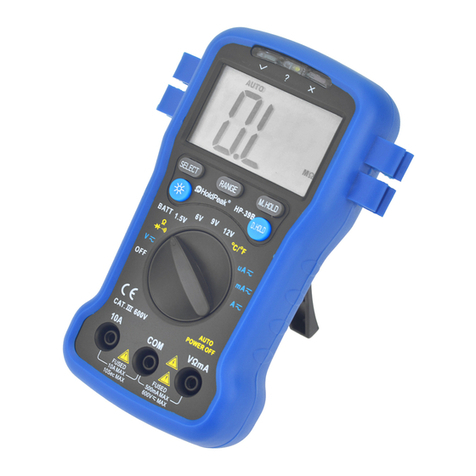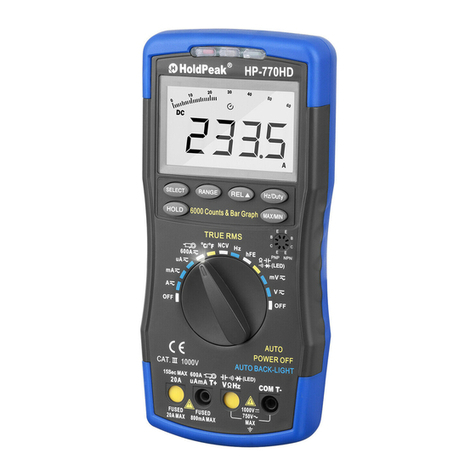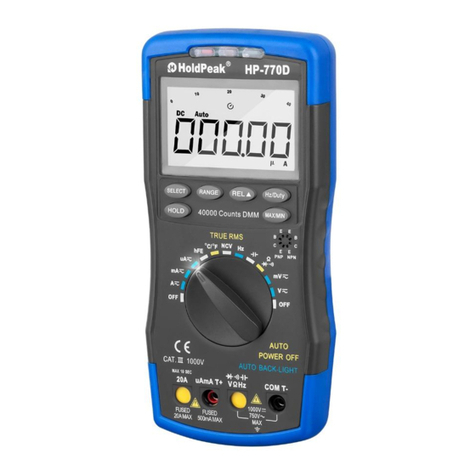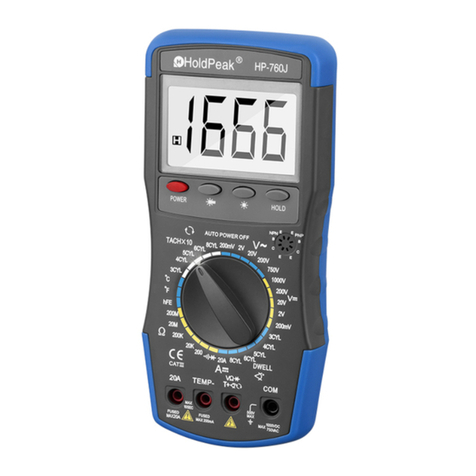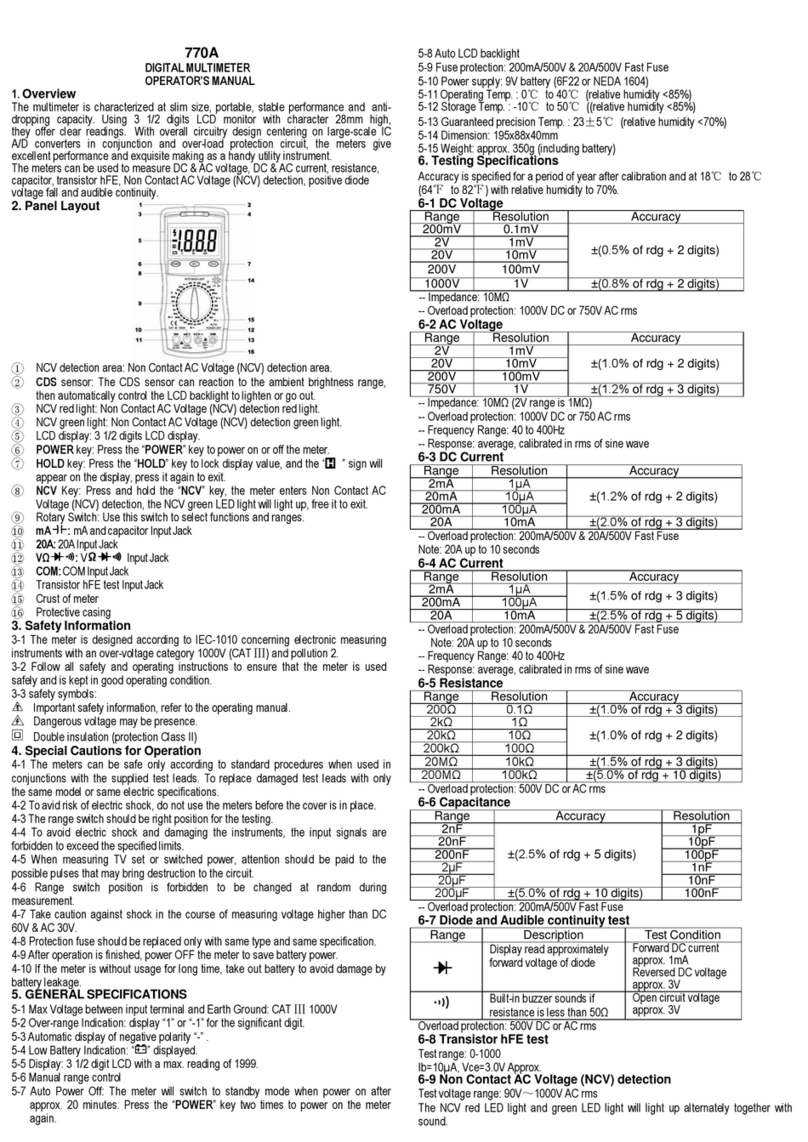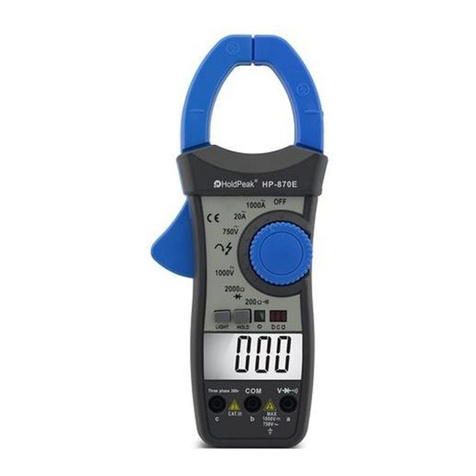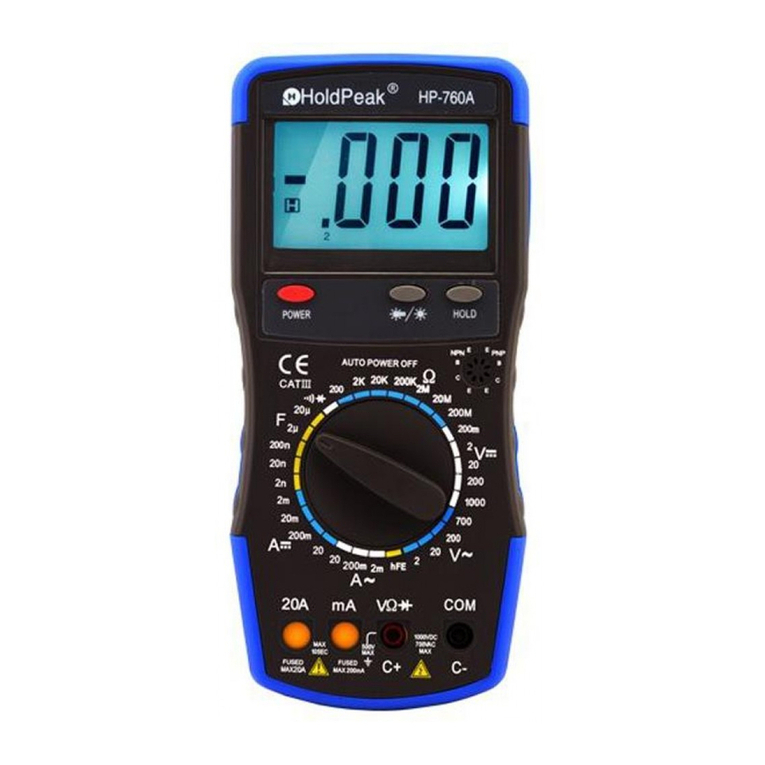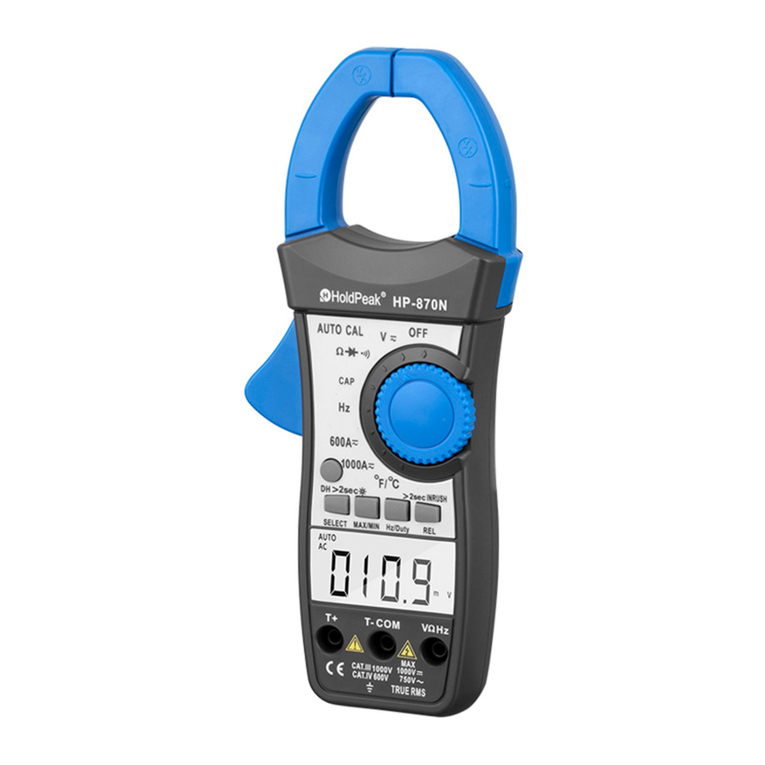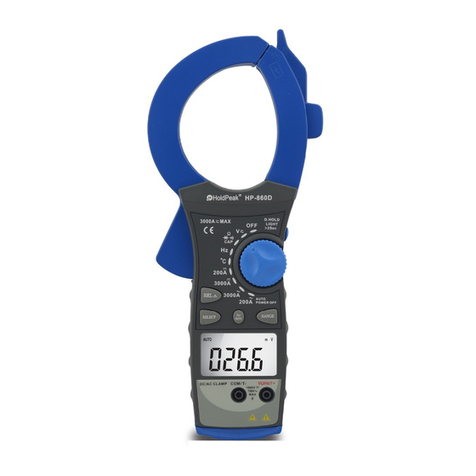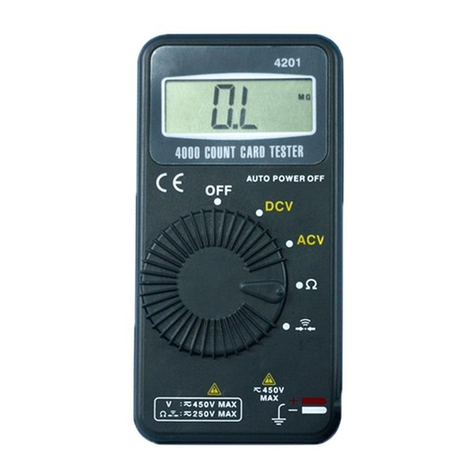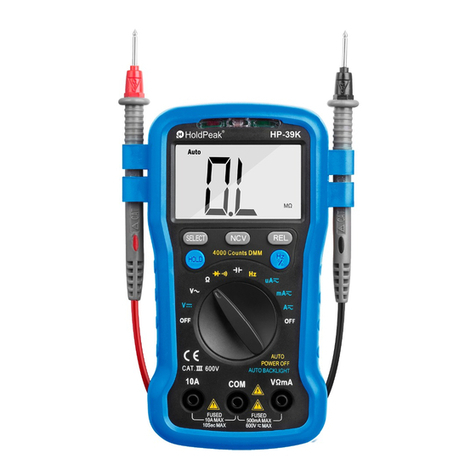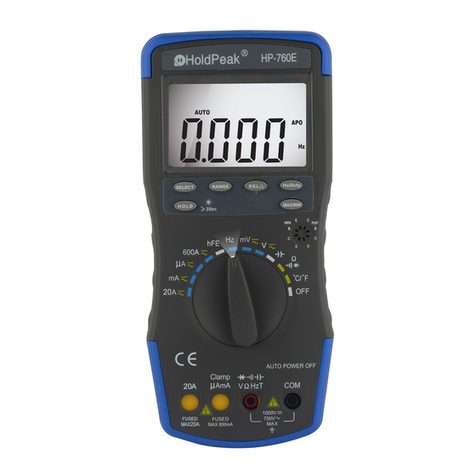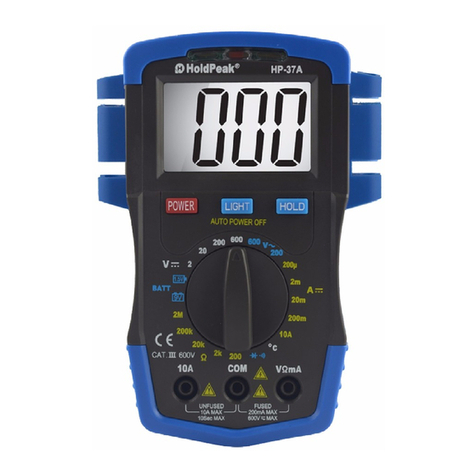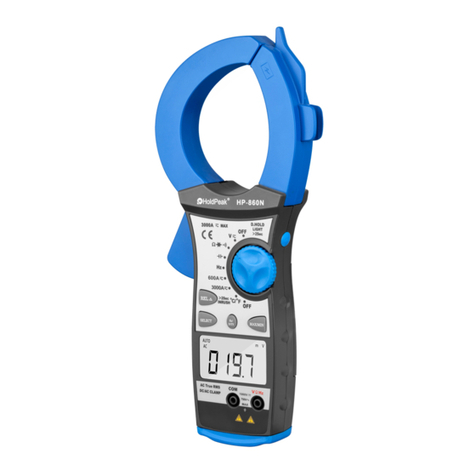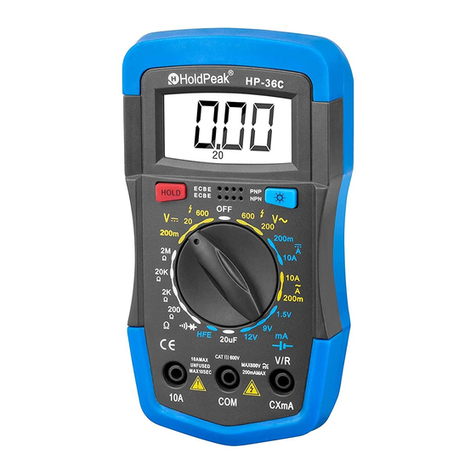Press the “AC/DC”function button to selectAC or DC.
Insert: *Black lead in COM terminal.
*Red lead in the 10Aor mA terminal.
IMPORTANT:
Turn OFF all power to the circuit or
disconnect the circult from the power
source.
Connect:
*the Red probe to the side of the circuit
closest to the power source.
*the Black probe to the side of the circuit to
ground .
*Turn the power ON and test .
NOTE :
Current must always be measured with the meter test probes connected in
series as described .
.MAINTENANCE
(1) The multimeter is a precision electronic device . Do not tamper with the
circuity . to avoid damage :
A : Never connect a source of voltage under the condition of resistance
measurement .
B : Never operate the meter unless the cover is in place and fully closed .
C : Battery replacement should be done after the test leads have been
disconnected and POWER IS OFF .
(2) turn off the power if the meter is not in use , removed the battery if the
meter will be free for long period .
(3) If a sign “ ” appear on the display , open the compartment cover ,
remove the spent battery and replace it with a battery of the same type .
(4) Contact with the maintenance service center of our company if you have
trouble .
Basic Diagnostic Testing
This chapter leads you through a systematic series of tests that check the
vehicle electrical system . These tests should de performed before testing
individual components.
Electrical System Diagnostics
It is important to diagnose a vehicle electrical problem thoroughly and
efficiently .
The series of tests that follow check primary areas that are responsible for the
majority of the electrical problems found in an automobile . perform these basic
tests,even if a vehicle has a trouble code set in the computer .A component
malfunction detected by the computer can be caused by a basic ground
problem in the electrical system . simply replacing a failed component will not fix
the problem if a poor ground caused the component failure .
The tests begin by checking the main source of power and the chassis ground
circuit connections . Ground circuits are one of the least understood but
potentially most troublesome areas of automotive electronics . An excessive
voltage ground in a circuit effects the entire electrical circuit . this is why it is
important to make sure the basic circuit are in good shape before checking
trouble codes and components.
Battery Testing
[1]Battery Test (surface Discharge)
NOTE:
*Remove the positive and negative battery cables and thoroughly clean the
cable terminals and the battery
posts . Reassemble and begin
testing.
*The ignition switch must be OFF
to prevent damaging the vehicle
computer when connecting or
disconnecting battery cables.
This test checks for a low current
discharge across the battery
case.
*Set the rotary switch to voltage.
*connect the negative (-) lead to
the negative battery post.
